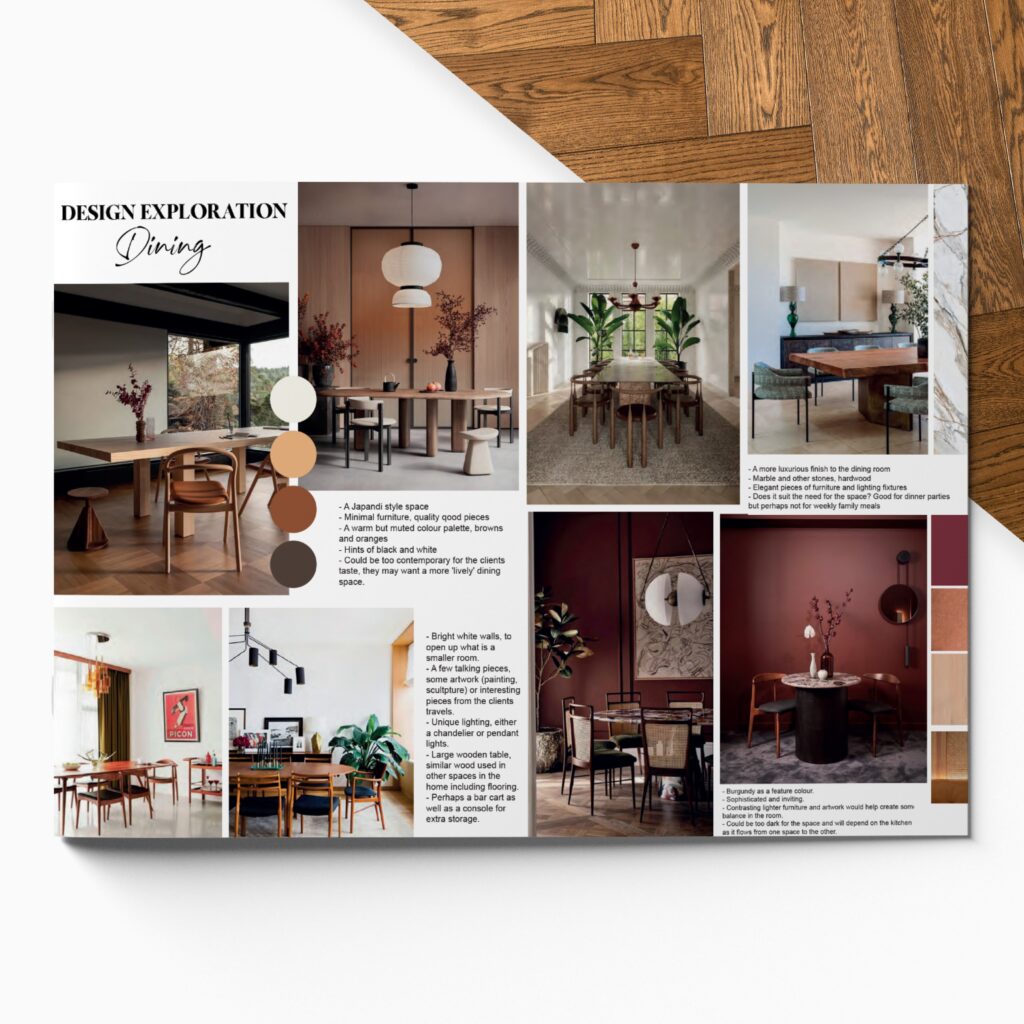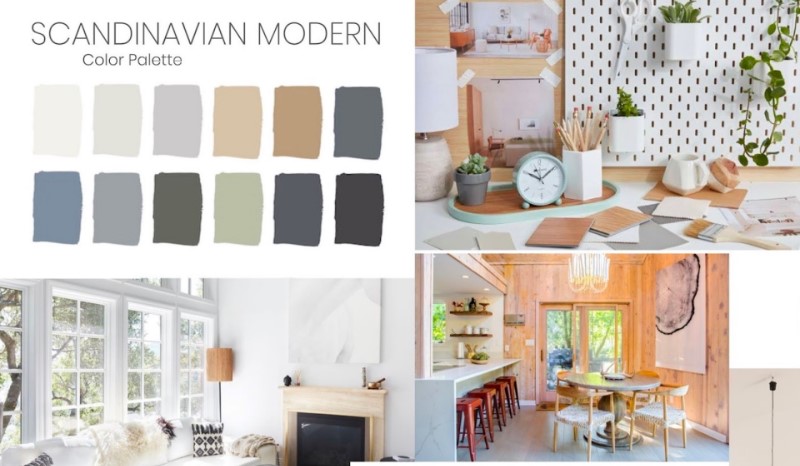What is Japandi Interior Design?
Like other favoured styles, it looks like Japandi interior design will continue to evolve with the times, and become a staple that designers return to, just as they would with modern Victorian or coastal style, mid-century modern or Hamptons style, adapting the design that will fit the space and their clients’ needs.
ISCD’s education manager, Gabrielle Rosenfeld is a fan of Japandi design, and the style is covered in the curriculum of ISCD courses as something that will be essential for our interior design students to know.
“Japandi style is a combination really of Scandinavian and Japanese styles, so it’s a very earthy, raw, organic, kind of style which brings in a lot of elements of nature and it’s just a really beautiful, natural, easy to live with style,” Gabrielle says.

ISCD student work by Alexandra Neylon.
According to Architectural Digest, the term Japandi really took off in early 2022. But the blending of Scandinavian and Japanese styles dates back even further, to the mid-19th century, when Japan reopened its borders to Western countries, and Scandinavian designers and artists began incorporating elements of Japanese style into their own designs.
Scandinavian Interior Design
Scandinavian interior design features a warm, neutral colour palette, with a focus on pale neutrals, whether they appear in furniture, flooring, paint or soft furnishings. The style is also linked with mid-century modern and minimalist design.
Scandinavian style creates warmth through the introduction of tactile natural materials, such as pale woods like birch, as well as woven wool, linen or cotton textiles. Natural light is a feature – making minimalist spaces appear light and airy.
READ: What is the Slow Home Movement?
Driving the design are concepts including hygge and lagom, with the Danish and Norwegian word hygge roughly translating to a cosy and convivial mood and the Swedish word lagom to an idea of something being “just right” or “just enough”.

ISCD student work by Lauren Tyson.
Japanese Interior Design
Traditionally, Japanese interior design styles place an emphasis on natural materials as well, and the natural world is further emphasised by framing garden views or using flowers, foliage or sculptural bare branches for decoration.
The neutral colour palette and the choices for furniture and flooring might tend to darker tones than Scandinavian design. However, with the abundance of natural surfaces and light, these darker tones are soothing rather than oppressive.
With the sleek lines, practical tone and raw materials you might think the Japanese style or its Japandi blend is close to industrial design, but it is much warmer.
A home that follows a Japanese design style will be minimalist while still incorporating meaningful design pieces. Objects might be chosen carefully for history or purpose. A family heirloom has history, while a teapot or dinnerware have purpose. There may be elements in the design that embody both, such as a beautifully crafted piece of furniture or ceramics that are still part of everyday use.
Modern Japandi Style
The beauty of embracing a style that is itself a blending of two different styles is that you have the freedom to lean more towards one style or the other, incorporating the elements that will create a unique and beautiful design.
You might take the lighter approach for a bright and airy space, or darken the paint and furniture for a cosy or dramatic look.
Does the design call for a place for guests to remove their shoes before entering the house as is traditional in Japanese design? Or will you focus more on creating a sense of hygge? You might opt for a bathroom inspired by the tranquillity of a Japanese bathhouse, with a Scandinavian style bedroom that’s cosy, with warm neutrals and soft woven textiles.
View this post on Instagram
You can play with the subtle differences between the two styles as much as you like. Where the Japanese style is calm, Scandinavian style is cosy, but both embrace minimalist simplicity. The lagom concept of less being more fits well with the use of multi-purpose spaces as seen in traditional Japanese houses. Planning for simple, practical multi-purpose spaces can be a great way to incorporate Japandi style.
Another feature of Japandi interior design is that it can be adapted to suit new builds and homes in an older style. The Japandi style can fit well with the simple lines and natural timbers of a mid-century modern dwelling. It can also be used to bring a more timeless elegance to the sometimes stark minimalism of contemporary homes. Interior designers can keep a few tricks in mind from Japandi design whether working with a brand new build or bridging the gap between differing styles in a renovation project.
View this post on Instagram
Above all, remember the idea that this is a style that’s “easy to live with”. Unlike true minimalism, Japandi interior design is homely and inviting. It’s practical and made for everyday life, not just for display. There’s no reason a Japandi style can’t be chosen for a family home.
Everyday items and necessities are elevated. Kitchen implements might be out on display, but there will be no extra clutter.
To stop a Japandi design from becoming cold and impersonal or too close to an industrial look, remember to bring in those elements of nature, cosiness and beauty. Value craftsmanship. Create spaces where friends and family will feel welcome and at ease. Embrace the concept of hygge, which is about being comfortable in company rather than being isolated in your comfort.
ISCD has a 40-year proven track record of producing leading Australian interior designers. We know design intimately, from colour theory, to furniture selection to the latest industry trends.
Are you interested in studying interior design or decoration? Do you want to know more about our online courses and where a career in interior design could take you? Connect with us today to learn more about our Diploma of Interior Design, the Certificate IV in Interior Decoration or any of our industry-focused microcredentials.